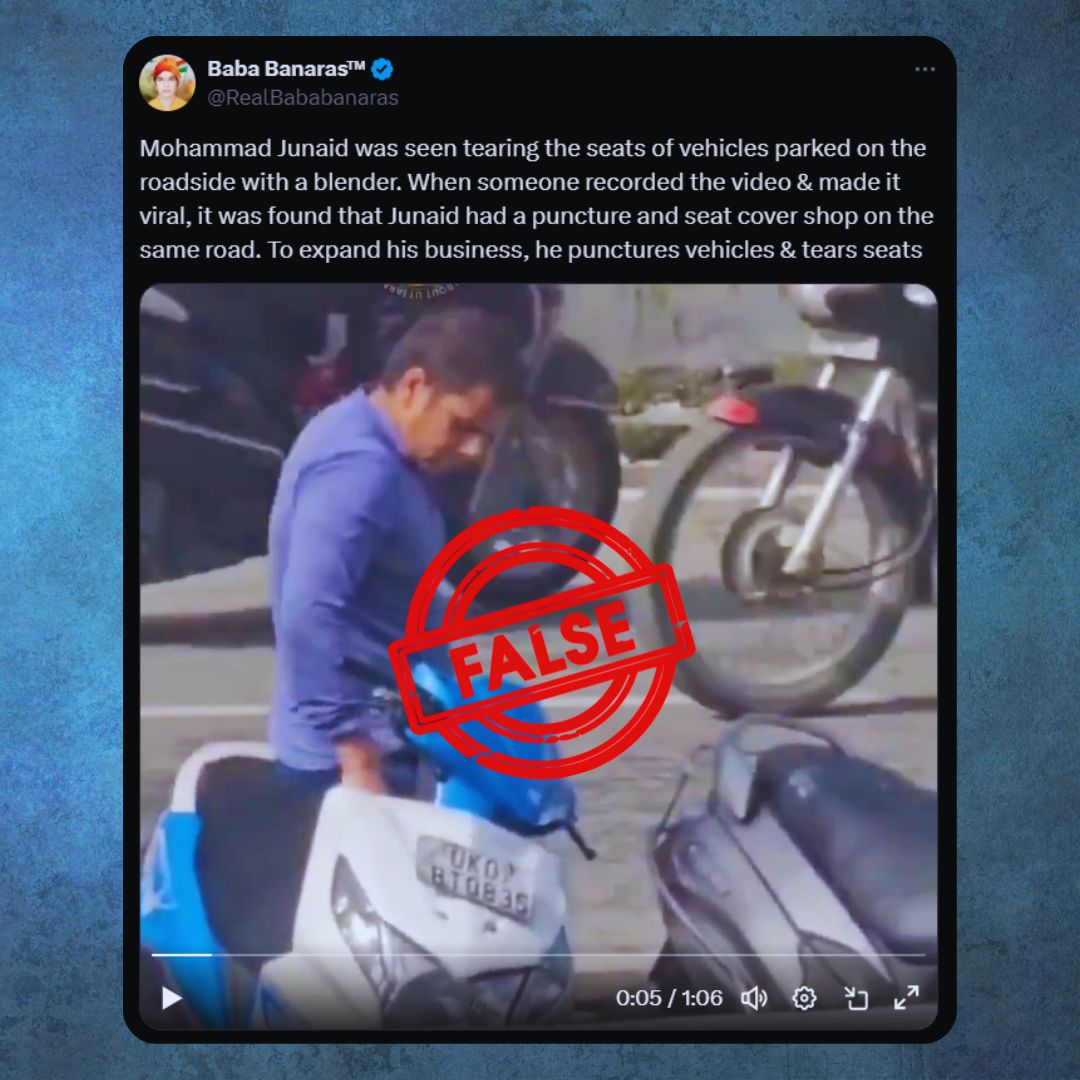The article addresses a viral video that surfaced on social media, showing a man tearing apart motorcycle seat covers. The video was quickly shared with a narrative suggesting that the individual involved is a Muslim named Dheeraj Aggarwal. This narrative ignited significant outrage and accusations of communal violence, framing the act as part of broader tensions between religious communities in India. The rapid spread of this video raised concerns about misinformation and its potential to incite further discord, prompting a thorough investigation into the claims made.
Claim
The central claim of the story is that a Muslim man named Dheeraj Aggarwal was caught on camera vandalizing motorcycle seat covers. This assertion implies not only the identity of the individual but also suggests a deliberate act of communal aggression, which has fueled divisive sentiments online. The claim has been presented as factual in various social media posts and news articles, leading to widespread condemnation and calls for accountability.
Mohammad Junaid was seen tearing the seats of vehicles parked on the roadside with a blender. When someone recorded the video & made it viral, it was found that Junaid had a puncture and seat cover shop on the same road. To expand his business, he punctures vehicles & tears seats pic.twitter.com/64gyPEUcPU
— Baba Banaras™ (@RealBababanaras) December 22, 2024
Fact
Upon investigation, it was revealed that the individual in the video is not Dheeraj Aggarwal, nor is there credible evidence linking him to any religious community. The fact-checking process identified that the video had been edited and taken out of context to fit a misleading narrative. Reports from several reputable sources confirm that the person in the video has been misidentified, and there is no substantiation for the claims made against him.
The top three sources corroborating this fact include:
- Boom Live – They conducted an in-depth analysis of the video and its origins.
- Alt News – They provided a detailed breakdown of the misinformation surrounding the incident.
- The Quint – They reported on the misrepresentation of facts related to the individual in question.
Conclusion
The fact-check classifies this claim as False Content. The information presented in the viral video is not only incorrect but also misleading, as it falsely attributes actions to an individual based on manipulated visuals and assumptions about their identity. This case highlights the dangers of misinformation, particularly in contexts sensitive to communal relations, emphasizing the need for responsible sharing and verification of content before drawing conclusions or inciting public sentiment.











